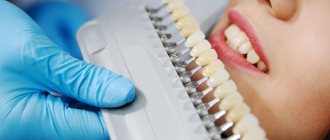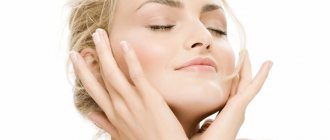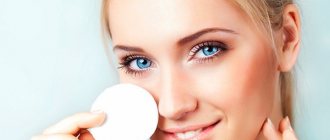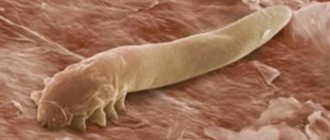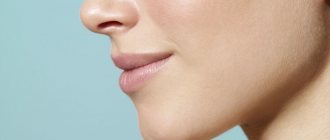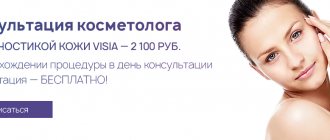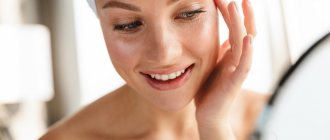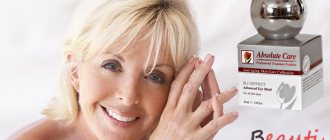Skin elasticity
Using collagen is the best answer to the problem of laxity and loss of firmness. The laboratories of Dr. Pierre Ricaud have developed a strategy for multidimensional correction of the elasticity of facial features, which includes strengthening, restoring, lifting and reshaping the oval of the face. To do this, we have selected essential molecules from plants that increase the firmness and tone of the skin by renewing the production of several collagens, giving the skin more essential cells, improving the texture of the epidermis, strengthening the elastic fibers and thus increasing the firmness of the facial skin .
Why are collagen and elastin important?
Collagen is the basis of all connective tissues. It plays the role of a protein component of bone and cartilage tissue, joint capsules and ligaments, maintaining their elasticity. Its presence in the synovial fluid is aimed at smooth sliding of the articular surfaces. Due to collagen, the vascular wall retains its strength and tone. Therefore, the appearance of varicose veins is associated primarily with a violation of the collagen structure. And, of course, collagen in combination with elastin is responsible for the density, firmness and elasticity of the skin, preventing the early formation of wrinkles.
What is the order of application?
Daily application of cream
Be sure to apply daily cream to clean skin for firmer, tighter, repaired, remodeled skin. Correct movements: Bend your fingers into hooks, spread your index and middle fingers, and place them at chin level to smooth and tighten the skin along the jaw towards the ears.
Caring for the skin around the eyes
If your eye area is prominent and your eyelids feel heavy, complement your routine with a special eye cream formulated for the delicate eye area. This will allow you to tighten the skin around your eyes and lift your eyelids. Correct movements: during application, touch and tap your eyelids with your fingertips. If necessary, this product is also applied to the upper eyelid.
Serum
Taking it a step further, a serum is the perfect way to improve your skin's elasticity and prepare it for cream application. Correct movements: after application, perform tapping movements on the skin so that the serum is absorbed faster and stimulates microcirculation.
Program
For intense effects, you can periodically carry out a remodeling program to gradually restore the effect. After 21 days, facial skin becomes more elastic and regains its shine. Correct Movement: Apply full dose every evening for 21 consecutive nights, replacing night cream.
- Smooth, light, slow movements of the hands from the inside out.
- Go down to the neck.
Why collagen and elastin are lost over time
Collagen, elastin, like any other proteins, are constantly renewed by our body. The molecules of these proteins perform their role in the body for several weeks or months, and then are destroyed. This process occurs due to the influence of two factors: the action of the enzyme collagenase or excess free radicals in the blood.
A decrease in skin production of collagen and elastin is due to a number of the following reasons:
- Age-related changes, since the amount of renewed proteins decreases annually.
- Menopause and other endocrine changes.
- Increased insolation.
- Intoxication of the body due to living in environmentally unfavorable regions.
- Bad habits and unbalanced diet.
When looking for a way to increase collagen production in your skin, you should start by reconsidering your lifestyle.
Scar treatment
Collostotherapy is a restorative therapy for the dermis.
Collostotherapy restores lost collagen, providing the cellular environment characteristic of young skin.
Collost is a sterile bioplastic collagen material with a fibrous structure. In its structure and composition it is as close as possible to human collagen. Gel "Collost" is a Russian invention and has found its application in various fields of practical medicine - in traumatology, dentistry, urology, etc. Collost gel injections provide excellent results in cosmetology. The main function of the drug is to restore lost natural collagen.
Why collagen?
Collagen is the main natural protein of connective tissue. It is this that ensures normal physiological regeneration of tissue and a strong skin framework. Strands of collagen provide a scaffold on which new cells can grow.
Collagen is actively used in cosmetology and aesthetic medicine. But for its action to have the desired effect, external use of a cosmetic product containing collagen is not enough.
That is why it must penetrate the skin and act on the middle and deep layers. For this, doctors use special collagen injections.
Scarring
Scars are the result of the biological process of skin healing, which results in the formation of fibrotic scar tissue
The cause of scar formation can be various skin injuries (burns, wounds, surgeries), as well as skin diseases such as acne (acne), dermatitis, furunculosis, etc.
As a rule, a “normotrophic” scar does not require correction - thin, pale, does not protrude above the surface of the skin, does not grow, is inconspicuously located and suits the owner of the scar. In the case when scars are located on open areas of the body, especially on the face, neck, chest, they can significantly reduce the quality of life and require treatment.
Until recently, the most common methods of scar correction were resurfacing and surgical excision. In recent years, the use of the COLLOSTOTHERAPY method has made it possible to take a fresh look at the difficult task of correcting atrophic scars and significantly improve treatment results. The method is based on the use of COLLOST™ gel, which is a matrix for targeted tissue regeneration, which allows it to be used not only as an injectable micro-implant, but also to activate the synthesis of one’s own collagen.
How does COLLOST™ work in the treatment of scars?
COLLOST™ is used to replenish collagen lost by the skin in the area of scars.
14 days before the procedure, the cosmetologist performs an allergy test (injects 0.1 ml of COLLOST™ gel into the skin of the forearm) in order to exclude an allergic reaction. Before starting the course of treatment, the doctor evaluates the allergy test and carries out the COLOSTOTHERAPY procedure.
To reduce sensitivity, before starting the procedure, doctors at the Sharm clinic perform local anesthesia, applying an anesthetic to the scar area. As a result, the procedure is tolerated comfortably by the patient.
Sterile 7% COLLOST™ gel is injected with a thin needle directly into the scar and into the surrounding skin to a depth of 1 to 3 mm.
After 2 weeks, the cosmetologist evaluates the changes and performs the next COLOSTOTHERAPY procedure.
After injection of COLLOST™ gel, the scar is mechanically filled and the skin surface is leveled.
At the site of injection of COLLOST™ gel, own collagen fibers begin to form, which fill the area of the defect.
Next, the doctor recommends coming back in a month and repeating the procedure.
To achieve maximum results, as a rule, 2 to 8 COLOSTOTHERAPY procedures are required.
COLOSTOTHERAPY is successfully combined with other techniques, for example, peelings.
Benefits of the COLLOSTOTHERAPY procedure
The procedure is successfully used to treat both “young” and “old” scars.
COLLOSTOTHERAPY replenishes lost collagen and restores normal skin structure.
The procedure is safe, since the doctor does an allergy test first (14 days before the procedure), which eliminates allergic reactions.
The procedure is painless, as the doctor first applies a local anesthetic to the skin.
The COLLOSTOTHERAPY procedure, compared to other methods of scar treatment, has an optimal price/quality ratio.
Application of collostotherapy - restorative therapy of the dermis during age-related changes.
What is dermis? This is a connective tissue that provides individual skin thickness, strength and elasticity. The dermis contains collagen, elastic and reticular fibers of connective tissue, which are responsible for the condition and elasticity of the skin. The condition of the dermis directly affects hydration and turgor, that is, the tension and elasticity of the skin.
Age-related changes in the skin occur due to numerous reasons: climatic, chemical, biological, as well as UV radiation (“skin photoaging”). The genetically programmed program of aging and cell death is activated. This process is facilitated by harmful substances accumulated by cells throughout life, changes in hormonal status, decreased immunity, stress, etc.
Signs of natural skin aging develop gradually. The number of collagen fibers that serve as the skin's framework progressively decreases. In addition, the rate of collagen renewal slows down. The skin becomes thinner, its elasticity and firmness decrease, wrinkles appear, and the shape and oval of the face changes.
The use of COLLOST™ gel in the correction of age-related changes is used for deep restorative therapy of the dermis, in the preparation and rehabilitation of the skin before and after dermabrasion, peelings, and plastic surgeries.
How does COLLOST™ work in the treatment of age-related skin changes?
COLLOST™ is used to replenish collagen lost in the skin due to age-related changes.
At the site where the COLLOST™ gel is introduced, its own young collagen fibers begin to form, and COLLOST™ itself gradually undergoes biodegradation.
COLLOST™ is a medical product that is certified by Roszdravnadzor (Registration Certificate No. FSR 2008/02112 dated April 23, 2008) and recommended for use by leading specialists in the field of cosmetology and plastic surgery.
External use of collagen
Collagen and its hydrolysates are often included in the formulations of various creams and serums as moisture-retaining and nutritional components. The effectiveness of such cosmetics is explained by the fact that the hygroscopic collagen film acts like a wet compress. This means that transepidermal water loss from the skin is reduced. Thanks to the hygroscopic properties of collagen, the moisture content of the stratum corneum of the skin increases.
Being a thermolabile protein, collagen, in contact with the skin, under the influence of body temperature and high moisture content can undergo partial proteolysis, forming water-soluble low-molecular components, which, with the help of enhancers present in the cream, are able to penetrate the stratum corneum and engage in metabolic reactions, stimulating metabolic processes in the dermis.
Broadband pulsed light
Photorejuvenation is a modern popular method widely used along with collagen injections. Manufacturers of devices sometimes indicate collagen production as an option. But it is difficult to completely agree with this.
Broadband pulsed light (IPL) penetrates the skin and is selectively absorbed by blood vessels, melanin, pigment formations or collagen without damaging the epidermis.
The rejuvenation technology is based on the impact of pulsed light on collagen, causing it to heat up. Due to endogenous heat, collagen retraction occurs; the photorejuvenation procedure cannot increase the amount of collagen, but its texture improves; the rejuvenation effect occurs due to smoothing the skin texture and improving its texture. One of the chromophores of incoherent pulsed light is melanin, therefore, due to the lightening and destruction of superficial telangiectasia, we can talk about the effect of rejuvenation, but in this case there is no need to talk about true rejuvenation and neocollagenogenesis.
Collagenarium and collagen lamps
Under the auspices of photorejuvenation, new inventions are appearing, such as collagenariums and collagen lamps. These devices promise collagen production not only in the face, neck and décolleté. But also the whole body. This makes collagen lamps attractive to the patient. 15 minutes of relaxation and here is the coveted new collagen. But unfortunately, everything is not so simple.
Manufacturers and suppliers of collagenariums assure that there are 2 types of collagen lamps - blue and red light.
• Blue light lamps have a range of 415 nm. Blue light has an antimicrobial effect on the body, improves the condition of the immune system. Unlike other ranges, blue light is more intensely absorbed by many photoreceptors of the skin, porphyrins, which release oxygen that kills bacteria (after 3 days of irradiation with a dose of 320 J/sq. .see their content is reduced by 99%).
In fact, dermatological practice uses the blue-violet spectrum of visible light to combat the bacteria Propionibacterium acne, which is one of the main pathogens in acne vulgaris.
• Red light lamps with a range of 633 nm. Red light lamps are designed to improve skin texture and texture through collagen production. The idea is quite simple: red light with a wavelength of 633 nm. Penetrates to a depth of 8-10 millimeters and reaches subcutaneous fat, red light in skin cells is converted into photosynthetic energy, which stimulates the production of collagen and elastin.
So, there are two main points that are worth paying attention to: first, there must be enough building material in the skin (in the form of amino acids) and second, it takes time to rejuvenate the collagen structure under the influence of red light - more than ten weeks.
The purpose of this article is not to attempt to debunk the myth about the possible synthesis of collagen and replenishment of the dermal matrix framework using various physical agents. Red and blue light have historically and very successfully proven themselves in physiotherapy and cosmetology, but doctors and specialists have always approached the prescription of these procedures with an understanding of why this principle of therapy is used, carefully collecting anamnesis, finding out contraindications, individually selecting the exposure time and the organ or area of the body or the person who will be exposed.
Today the situation is such that anyone can “give themselves the happiness of new collagen” in just 20 minutes a week, just pay for a subscription to a beauty salon.
If advertising slogans turn out to be tempting, you must remember that before visiting a collagenarium you must consult a doctor and listen to his recommendations about the frequency and time of the procedure, be sure to protect your eyes and the breast area and remember the absolute contraindications to this procedure.
What happens when collagen levels drop?
At a young age, collagen synthesis and breakdown occur at approximately equal rates, so the skin always looks young and fresh. But over the years, this process is disrupted. After 35 years, the number of fibers produced decreases by 2 times, and in the future their number decreases even more. This leads to loss of skin elasticity, formation of wrinkles, and blurred facial contours.
The rate of collagen loss also depends on ethnicity, hereditary factors, lifestyle and underlying medical conditions. However, much depends on proper care, which slows down the withering process.
Signs of a lack of collagen in the body
Age is not the only factor that determines decreased collagen production. There are a number of signs that may indicate protein deficiency. You should pay close attention to the following manifestations:
- fragility of bones, because collagen is a connective tissue that holds minerals together during their formation;
- early wrinkles;
- joint pain;
- problems with intervertebral discs;
- loose teeth;
- glaucoma.
Signs of a lack of collagen in the body
Additionally, it is worth noting the properties of ascorbic acid. How does it help increase collagen production? Vitamin C is involved in the synthesis of collagen amino acids, which occurs with the participation of lysine and proline. Its deficiency may be indicated by an increase in organic substances in the urine, such as:
- hydroxyphenyllactic acid;
- homogentisic acid;
- hydroxyproline.
This is interesting!
“Water-salt balance in the body: what regulates it and how to restore it” Read more
Symptoms of low vitamin C levels include:
- frequent colds. This occurs due to disruptions in the immune system, as well as problems with the functioning of neutrophils that create a protective barrier;
- iron deficiency (anemia). The cause may be either a malabsorption in the gastrointestinal tract or a lack of protein in the diet;
- long healing of even small wounds;
- bleeding from the nose and gums.
How to Guaranteed Lose Weight with Water: 3 Simple Habits
There are almost no women in the world who have never been on a diet. Sooner or later, everyone faces the desire to lose a couple of kilograms.
In order for the treasured number to appear on the scales sooner, introduce 3 healthy and super simple habits into your life: we have prepared a document with experts where we describe them in detail.
Artyom Khachatryan
Practitioner, nutritionist, naturopath
75% of our course participants who follow these habits have significantly reduced their weight!
You can download the document for free:
The factor that provokes the breakdown and prevents the synthesis of collagen is homocysteine. This is a non-proteinogenic amino acid, the increase in concentration of which is caused by a lack of vitamins B6 (P-5-P), B9 (folic acid), B12 (cobalamin). Genetically, high homocysteine levels are determined by DNA mutations. Therefore, diagnosing its concentration in the blood is important, especially when determining options for increasing collagen production.
